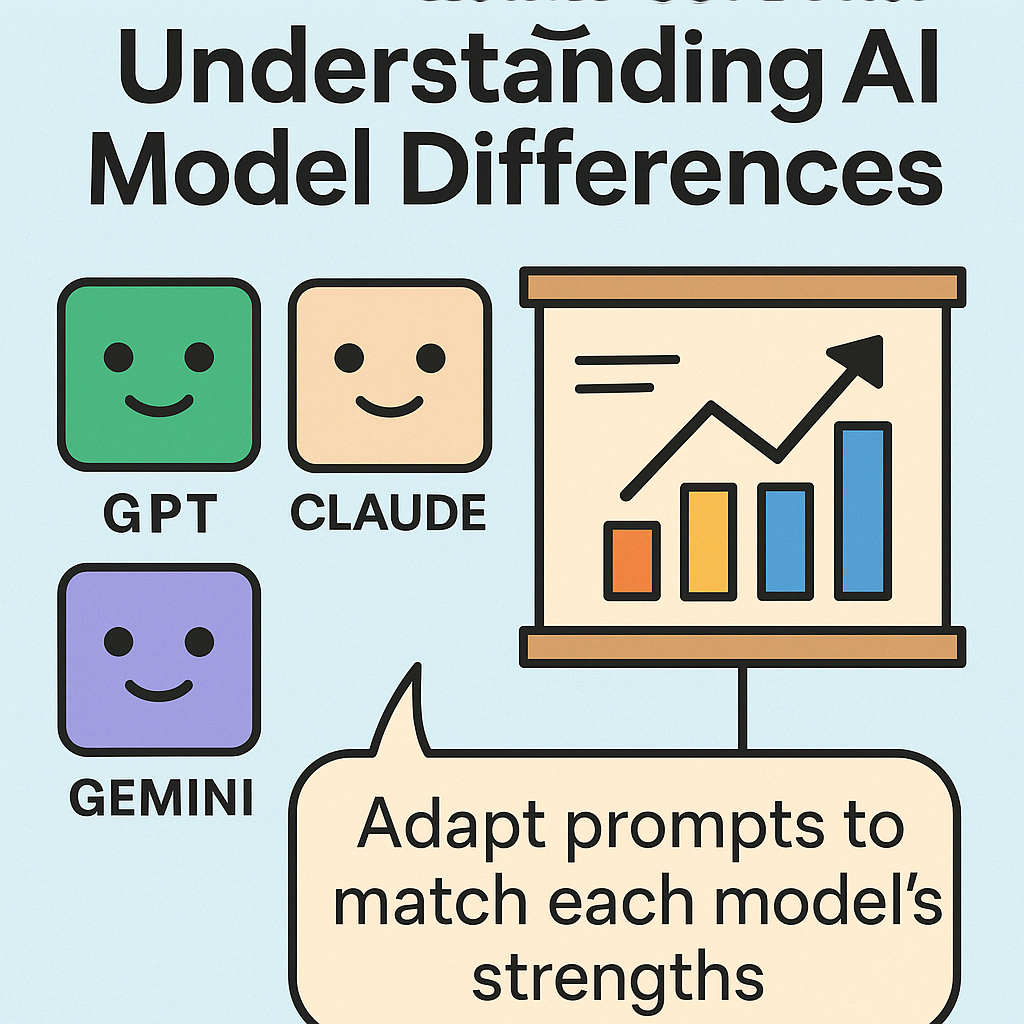If you’ve ever typed the exact same prompt into two different AI tools and received very different answers, you’re not alone. GPT, Claude, and Gemini often respond in ways that reflect their unique training, design, and guardrails.
But this variation isn’t a weakness — it’s actually a strength. By understanding how different models work, you can choose the right AI for the right task and get more reliable, creative, or insightful results.
👉 If you’re new to prompting, start with ChatGPT for Beginners: 7 Easy Ways to Boost Productivity with AI.
👉 For advanced methods, see 7 Proven ChatGPT Techniques Every Advanced User Should Know.
Why Do Different AI Models Respond Differently?
1. Training Data & Philosophy
- GPT (OpenAI): Trained on massive internet text, excels at creativity, coding, and broad general knowledge.
- Claude (Anthropic): Prioritizes safety, helpfulness, and reasoning with longer context memory.
- Gemini (Google): Integrates real-time search + multimodal inputs, often giving more up-to-date info.
- LLaMA (Meta): Open-source, which means developers customize it — so results can vary widely depending on implementation.
2. Architectural Differences
- GPT-5: Focused on speed, structured reasoning, and creative output.
- Claude 3.5: Handles longer documents and nuanced conversations.
- Gemini 1.5: Stronger in images + text (multimodal).
- Open-source models (like Mixtral or LLaMA 3): Great for privacy, but may lack polish.
3. Guardrails & Personality
Every AI model comes with hidden “system prompts” that influence style:
- GPT leans toward neutral but creative.
- Claude leans toward cautious, ethical, and structured.
- Gemini may emphasize factual accuracy with links and references.
Side-by-Side Prompt Example
Prompt: “Explain climate change to a high school student.”
- GPT: Uses analogies (like a blanket around the Earth), balancing science with storytelling.
- Claude: Provides structured, safe explanations with bullet points and emphasis on responsible action.
- Gemini: Adds recent data, charts, or links to articles.
- LLaMA (via Hugging Face): May give more raw or technical answers, depending on the fine-tuned version.
👉 Related: Learn how to refine prompts with Prompt Chaining Made Easy.
Why This Matters for You
Understanding model differences helps you:
- Save time → Use Gemini or Perplexity for quick research.
- Get creative → Use GPT for brainstorming ideas or writing.
- Think deeply → Use Claude for complex reasoning or analysis.
- Stay private → Use open-source models like LLaMA when you don’t want cloud storage.
🛠 Pro Prompting Strategies Across Models
- Role-Based Prompts
- Best with Claude and GPT.
👉 Example: “You are my project manager. Break down this assignment into steps.”
👉 Guide: How to Use GPTs Like a Pro: 5 Role-Based Prompts That Work.
- Best with Claude and GPT.
- Multi-Model Testing
- Try the same question in GPT + Gemini for both creativity and accuracy.
👉 Use Poe to compare responses side by side.
- Try the same question in GPT + Gemini for both creativity and accuracy.
- Prompt Chaining
- Break down big questions into smaller ones. GPT and Claude excel here.
👉 See: Prompt Chaining Made Easy.
- Break down big questions into smaller ones. GPT and Claude excel here.
- Ask for Sources
- Works best with Gemini and Perplexity. Example: “Provide your answer with citations.”
Real-World Use Cases
- Content Creation: Draft with GPT, fact-check with Gemini, refine with Claude.
- Learning & Tutoring: Use Claude for safe, step-by-step teaching.
- Business Planning: Ask GPT for ideas, Gemini for market trends, Claude for structured strategies.
- Research: Combine Perplexity AI (citations) with Claude for summaries.
👉 Related reading: Smarter Search Made Easy: Perplexity AI Beginner’s Guide.
Final Thoughts
Every AI model brings something different to the table. Instead of choosing just one, think of them as a team of specialists: GPT the creative, Claude the thinker, Gemini the researcher, and LLaMA the customizable builder.
The key takeaway: prompts will always vary, but with practice, you’ll learn how to match your prompt to the model — and that’s how you unlock the real power of AI in 2025.



